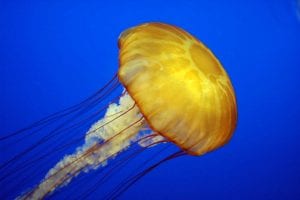
The smallest cube was the most effective when it came to maximizing diffusion.
This cube was the most effective because it had the smallest volume. The smaller the volume of the cube, the solution Has less surface area in which it has to travel. This allows for maximum diffusion. The larger the surface area to volume ratio, the more likely to diffuse at a maximum level it will be.
This suggests that the surface area of the cells must be very large, which would normally result in a large volume. However, a large volume means that more solution has to seep through the cell in order for the cell to be fully diffused. It would suit much better if a cube has a smaller volume. This is because there is less cell to be defused compared to a bigger volume  in which the reaction has to happen at the same rate. It is similar to comparing it to someone running a race. If 1 person is running 100 meters and the other is running 1000 meters, (assuming they are running at the same speed) the one running more distance will require more time to finish the race.
in which the reaction has to happen at the same rate. It is similar to comparing it to someone running a race. If 1 person is running 100 meters and the other is running 1000 meters, (assuming they are running at the same speed) the one running more distance will require more time to finish the race.
Cube C will be most effective at maximizing diffusion because of the larger surface area to volume ratio. The high surface area number means that there is more “space” for the solution to enter the cube, and the low volume number means that there is less internal space within the cube for the solution to fully immerse in. We can see this with the bottom cube in the image, which has turned almost entirely pink as opposed to the top cube which still has a large portion in the center that did not turn pink.
In order for a cell to properly function, there must be a high surface area to volume ratio that allows adequate entering/exiting of gases. This can only happen at certain high SAV ratios, so as the cell grows, the SAV ratio decreases, which results in gas exchange being reduced. Ultimately, the cell loses its ability to function.
As mentioned above, a cell can only properly function when a high SAV ratio is maintained. When a cell is as large as a small fish, the SAV ratio will not be high enough. This will result in the cell undergoing cell division in order to maintain a high SAV ratio. Therefore, bacteria, which are prokaryotes (single-celled organisms) must be small to maintain a high SAV ratio.
Large organisms need their entire body to be composed of cells, and if the organism is unicellular, that will result in a huge cell that has a tremendously low SAV ratio. To eliminate this problem, the organisms are multicellular with tiny cells that lead to higher SAV ratios. Furthermore, these organisms have developed features that allow them to speed up and aid the movement of materials in and out of the organism and the cells. These features include gas exchange organs (our lungs) and our circulatory system (our blood).















 Page #1
Page #1
 Page #3
Page #3